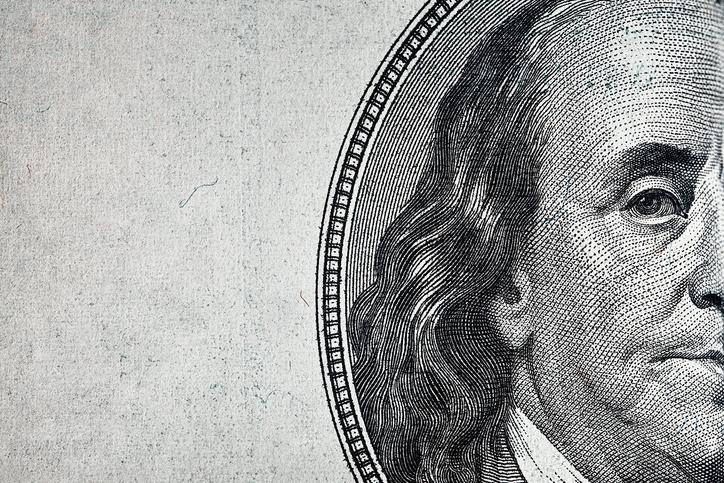
Chinese and European aspirations to weaken the dominance of the US dollar as the global currency of choice have come to naught, with the latest global survey showing the greenback is on one side of 88% of all foreign currency transactions, an 18-year high.
The dollar’s ascendency gives the US administration an unrivalled ability to exercise coercion by imposing economic sanctions.
A new report by the United States Studies Centre’s Stephen Kirchner argues that the dominant role of the US dollar reflects the depth of US capital markets and the strength of US institutions and is likely to be long-lasting.
However, the paper warns that excessive use of economic sanctions will lead affected nations to develop workarounds.
The triennial survey of foreign exchange turnover conducted by the Bank for International Settlements showed the US dollar’s share had dropped to 84.9% at the beginning of the decade but has since gained ground at the expense of both the euro and the yen.
The euro was on one side of 32.3% of foreign exchange transactions this year, down from 39.0% in the 2010 survey, while the share of the yen dropped from 19.0% to 16.8%.
Only 4.3% of global foreign exchange deals involve China’s renminbi, significantly less than the 6.8% using the Australian dollar.
The foreign exchange market, which turns over US$6.6 trillion a day, is only one dimension of the US dollar’s dominance. It also accounts for 63% of outstanding debt securities (compared with 20% for the euro) and 40% of cross-border financial transactions.
The US dollar is used as the currency for invoicing more than three times as many global exports as America itself ships. About 70% of nations peg their own currencies in some way to the US dollar.
It is also the currency of choice for the world’s central banks, which use it for 62% of their foreign exchange reserves, although Kirchner argues that this status as a ‘reserve’ currency has little impact on the dollar’s ubiquitous use in global commerce. Rather it’s a reflection of the depth and liquidity of US capital markets and their supporting economic and political institutions.
When the euro was launched in 1999, many economists expected it to rival, or even supplant, the US dollar. The former head of international economics at the US Treasury, Fred Bergsten, expected the euro would match the US dollar within five to 10 years.
China’s central bank has been pursuing a strategy to internationalise the renminbi since 2006 when it argued it would enhance China’s international status and bring a ‘rise in power standing’. The International Monetary Fund included the renminbi in the basket of currencies used to determine the value of its ‘special drawing rights’ in 2016.
However, Kirchner argues that both the euro zone and China show that size alone will not deliver international status to a currency.
‘Only well-developed capital markets, backed by sound political institutions, relatively sound monetary and fiscal policy, property rights and the rule of law, can provide the underpinnings for a currency that is widely demanded outside its own borders’, he says.
‘[B]oth the euro zone and China are beset by chronically weak political and economic institutions that are also resistant to reform. The prospect that either the euro or RMB significantly displace the dollar in the global economy in the medium-term is close to zero.’
He says the euro has been a source of economic weakness rather than strength for its member economies by limiting the scope for exchange rate adjustment to absorb economic shocks. Euro-denominated assets are not seen by global investors as a safe haven in times of trouble because the monetary union is not backed by any common budget strategy or banking union.
Between 2012 and 2019, the euro’s share of global payments dived from 44% to 34%, while the European Central Bank’s own measure of its international role shows it has been in decline since 2006 and is virtually no greater now than it was at its birth 20 years ago.
The indispensability of the US dollar in global transactions gives Washington a powerful lever. US economic sanctions can prevent companies and individuals from accessing the US payments system to settle US dollar transactions.
‘Non-US banks rely on their relationships with US banks and their access to US-regulated dollar payments system infrastructure to effect international transactions on behalf of their clients’, the report says.
‘Russia, Iran, Venezuela and North Korea have been the subject of sanctions whose enforcement is made effective largely by the role of the US dollar in the global economy.’
However, the economic aggression is bringing some pushback. For example, Europe is moving to price its oil imports in euros, to facilitate continued purchases from Russia. With Iran, a special vehicle has been established so that European importers and exporters match their transactions on the European side of the border, while their Iranian counterparties do the same with their rials on their side.
‘If the US government were to abuse the role of the dollar as an instrument of international economic coercion, it might further foster the development of alternative, non-US dollar-based payments mechanisms’, the report says.